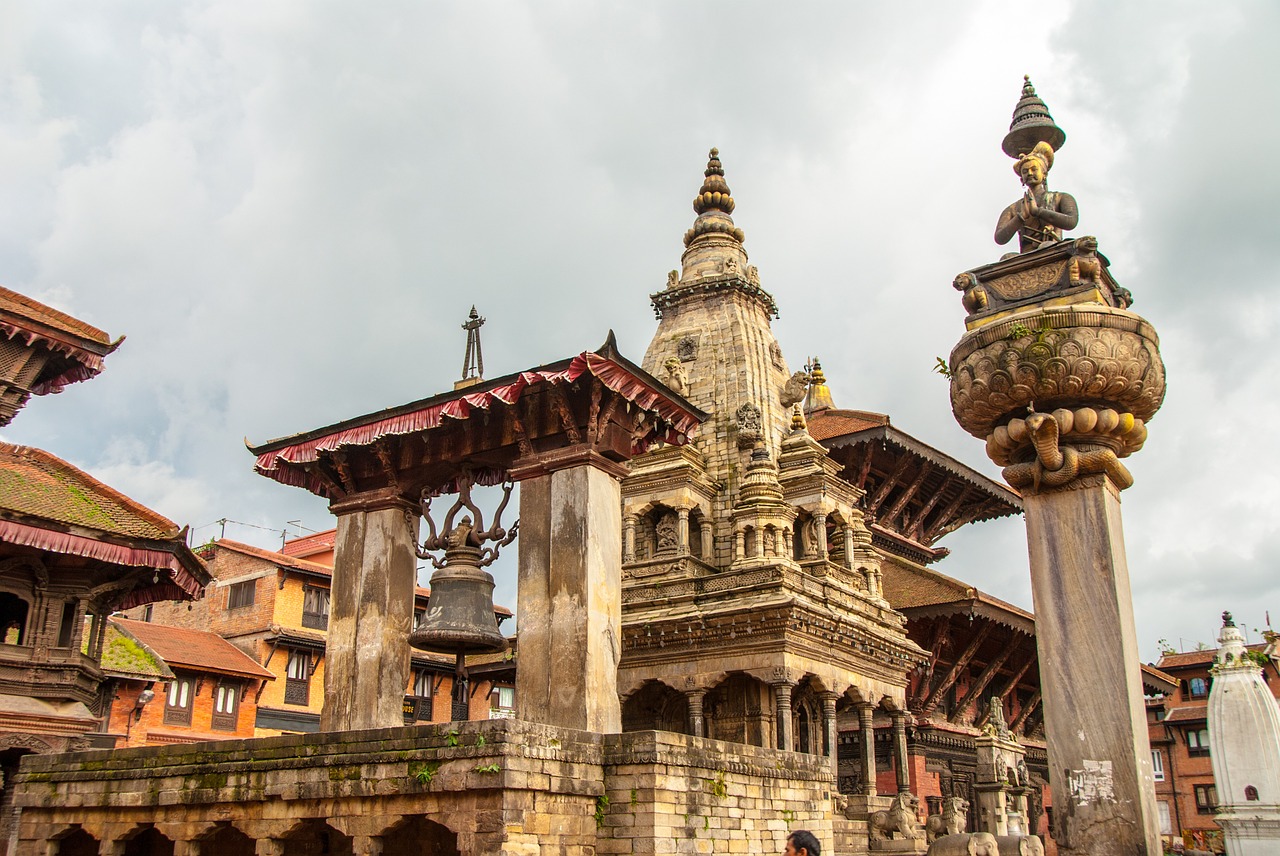Nestled in the ancient city of Patan, Nepal, Patan Durbar Square stands as a testament to the rich cultural heritage and architectural marvels of the Kathmandu Valley. Steeped in history, this UNESCO World Heritage Site beckons visitors with its intricate temples, palaces, and stunning craftsmanship. In this article, we will embark on a journey to explore the captivating beauty and cultural significance of Patan Durbar Square.
- A Historical and Cultural Overview: Patan Durbar Square served as the royal palace complex for the Malla Kings of the Patan kingdom, who ruled the region from the 14th to the 18th century. It became a center of art, architecture, and learning, showcasing the Newari culture and the influence of Hinduism and Buddhism.
- Architectural Marvels: a. Krishna Mandir: Admire the magnificence of the Krishna Mandir, a stone temple dedicated to Lord Krishna. Its ornate carvings, delicate spires, and intricate woodwork are a testament to the exceptional craftsmanship of the Newari artisans. b. Patan Museum: Housed within the ancient palace building, the Patan Museum displays an extensive collection of religious art, bronze statues, and exquisite metalwork. Immerse yourself in the rich history and religious significance of the region. c. Golden Temple (Hiranya Varna Mahavihar): Visit the Golden Temple, an architectural masterpiece adorned with gilded roofs, intricately carved windows, and a serene courtyard. It is one of the oldest Buddhist monasteries in Nepal and a sacred site for Buddhist pilgrims.
- Durbar Square Attractions: a. Royal Palace Complex: Explore the intricately designed courtyards, palaces, and temples within the Durbar Square area. The Mul Chowk, Sundari Chowk, and Keshav Narayan Chowk are notable highlights. b. Bhimsen Temple: Marvel at the elegant Bhimsen Temple, dedicated to the god of commerce and trade. The temple’s architectural beauty and exquisite wood carvings are a sight to behold. c. Taleju Bell: Discover the Taleju Bell, an ancient bell that was rung to summon the citizens for public gatherings and announcements. It stands as a symbol of the city’s rich history and communal harmony.
- Traditional Newari Culture: Patan Durbar Square offers a glimpse into the vibrant Newari culture. Explore the narrow alleys lined with traditional Newari houses, sample local delicacies such as Juju Dhau (Newari yogurt), and witness the skillful artisans engaged in traditional crafts like woodcarving and metalwork.
- Tips for Exploring Patan Durbar Square: a. Hiring a Guide: Consider hiring a knowledgeable local guide who can provide insights into the historical and cultural significance of the site, enhancing your experience. b. Respectful Attire: As Patan Durbar Square is a religious site, dress modestly and respectfully. Cover your shoulders and avoid revealing clothing to show reverence for the religious and cultural heritage. c. Preservation and Conservation: Help preserve the site by following designated pathways, refraining from touching or damaging the structures, and disposing of waste responsibly.
Patan Durbar Square stands as a living testament to Nepal’s rich cultural heritage and architectural prowess. With its awe-inspiring temples, palaces, and artistry, it transports visitors to a bygone era of royal splendor and artistic excellence. Explore the intricacies of Newari craftsmanship, immerse yourself in the vibrant culture, and witness the historical grandeur of Patan Durbar Square—a true gem of Nepal’s cultural landscape.
